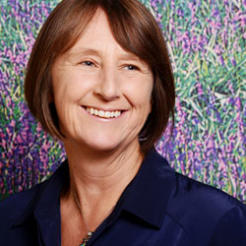The Big Lottery Fund is embarking on a strategic review that will underpin its direction and priorities for the next three to six years.
New chief executive Dawn Austwick, who has been in the role for four months now, is about to start a “conversation with the sector” to help BIG write a strategic plan that will kick in from the end of March 2015. It will last until 2021 with a review in 2018.
The review is separate from the triennial review just conducted by the government into BIG’s functions, form, effectiveness, efficiency and governance. The government is currently analysing the feedback to this consultation and will publish its report soon.
Austwick said BIG’s strategic review would be deliberately wide-ranging, covering: “What do we think our strategic direction is, what do we want to do, how do we respond to the world out there, how should we engage with the voluntary and community sector, what opportunities are there for us to do things differently, or the same.” The funder will consult with the sector over the next four to five months and publish its conclusions around the beginning of next year.
The consultation will not take the form of a big document with screeds of questions – Austwick describes it more as a “quiet, thoughtful conversation” with the sector that will begin with a series of roundtable meetings. A digital platform will also be built incorporating software that will help to analyse responses.
Austwick predicted that the review would explore how the funder could better connect its two types of grantmaking – its responsive, demand-led grants programmes such as Reaching Communities and Awards for All, and its strategic, programmatic funding where BIG identifies knotty issues and attempts to tackle them.
She said she liked this pattern of blended grantmaking, because to have one without the other would be missing a trick, but was convinced that an opportunity exists to better utilise the relationship between the two.
Enabling other funders to access BIG's data
She said BIG was a vast source of information and intelligence on need and demand, and it should be able to use technology to better exploit that resource. “We ought to be able to synthethise that data to inform our strategic programmes.”
Not only that, but the data should be made available to other funders to analyse and interrogate themselves.
“We have got the scale and resource and we ought to be working with others to catalyse it – we should be building a ‘movement of funders’ doing that,” Austwick said.
She commented that BIG has a peculiar role in the funding ecology precisely because of its scale and reach, and it must ensure that what it does is complementary to other funders, and doesn’t crowd them out. The strategic review will hopefully work out how BIG can best support the overall ecology, she said. “We need to really understand our place in the market.”
“I’m not suggesting that we carve the market up, that would offend my free-market instincts,” she said, “but I think we can be more intelligent about how we can best support our applicants and beneficiaries.”
The strategic review will set principles, values and overall direction – there won’t be a lot of questions on process or applicant feedback, for instance.
Last financial year, 2012/13, BIG awarded funding totalling £778m. Some 92 per cent of this went to the voluntary and community sector, well above the 80 per cent self-imposed minimum threshold. BIG distributes 40 per cent of lottery money – the remaining 60 per cent is divided equally between arts, sports and heritage – and DCMS has given no indication that it intends to alter this allocation.









